Got a small living room and dining room combo that feels like a furniture traffic jam? Same. The good news: you don’t need more square footage, just smarter moves. These seven ideas will help you create flow, sneak in storage, and make your space feel bigger, brighter, and way more stylish—without sacrificing comfort. Let’s make that combo layout work like it was custom-designed for you.
1. Map The Room With Zones (Not Walls)
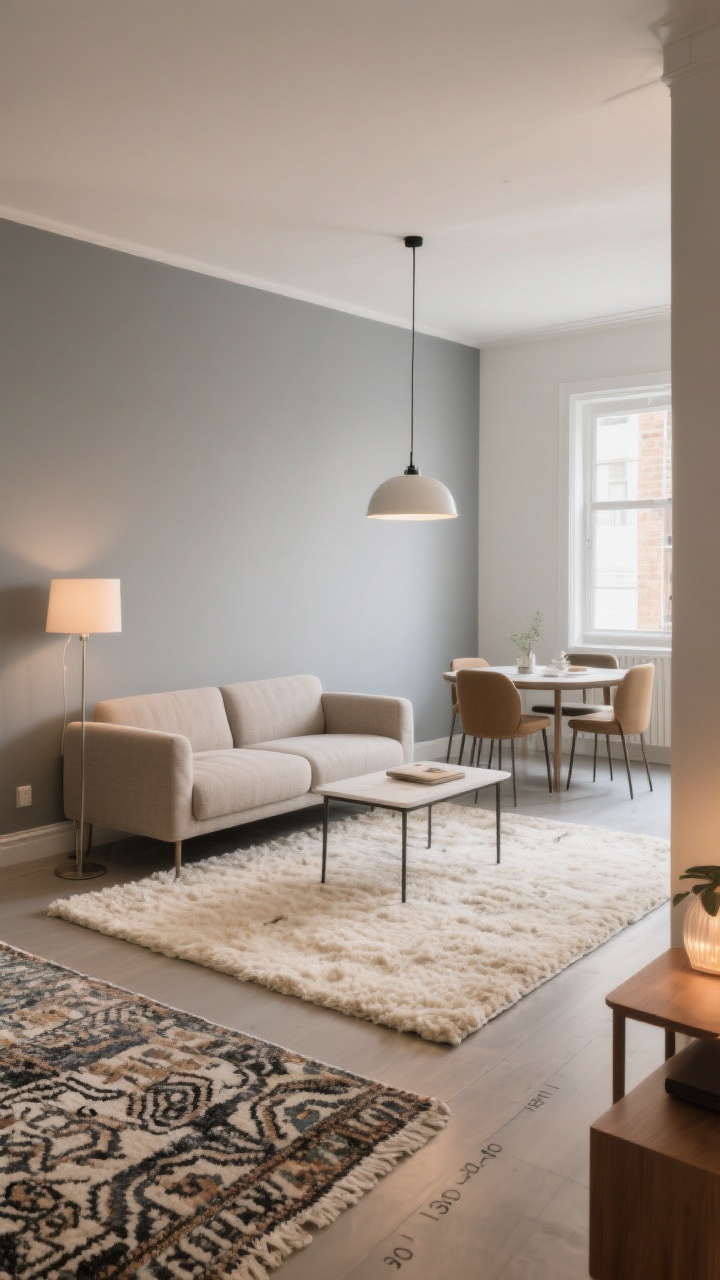
Open concept is great—until your sofa photobombs your dining area. The secret is zoning. You’re creating “rooms” without walls using rugs, lighting, and furniture placement.
Start With Anchors
- Rug it out: One rug for the living area, one under the dining table. Different but coordinated patterns = instant separation.
- Light it right: A pendant over the dining table and a floor lamp near the sofa defines each zone elegantly.
- Float furniture: Pull the sofa a few inches from the wall. It creates a subtle path and makes the space feel intentional.
Keep the visual weight balanced. If the couch is chunky, choose a sleek dining set. And leave a clear walkway—aim for at least 30 inches between zones so it doesn’t feel like an obstacle course.
2. Choose Flexible Furniture That Moonlights
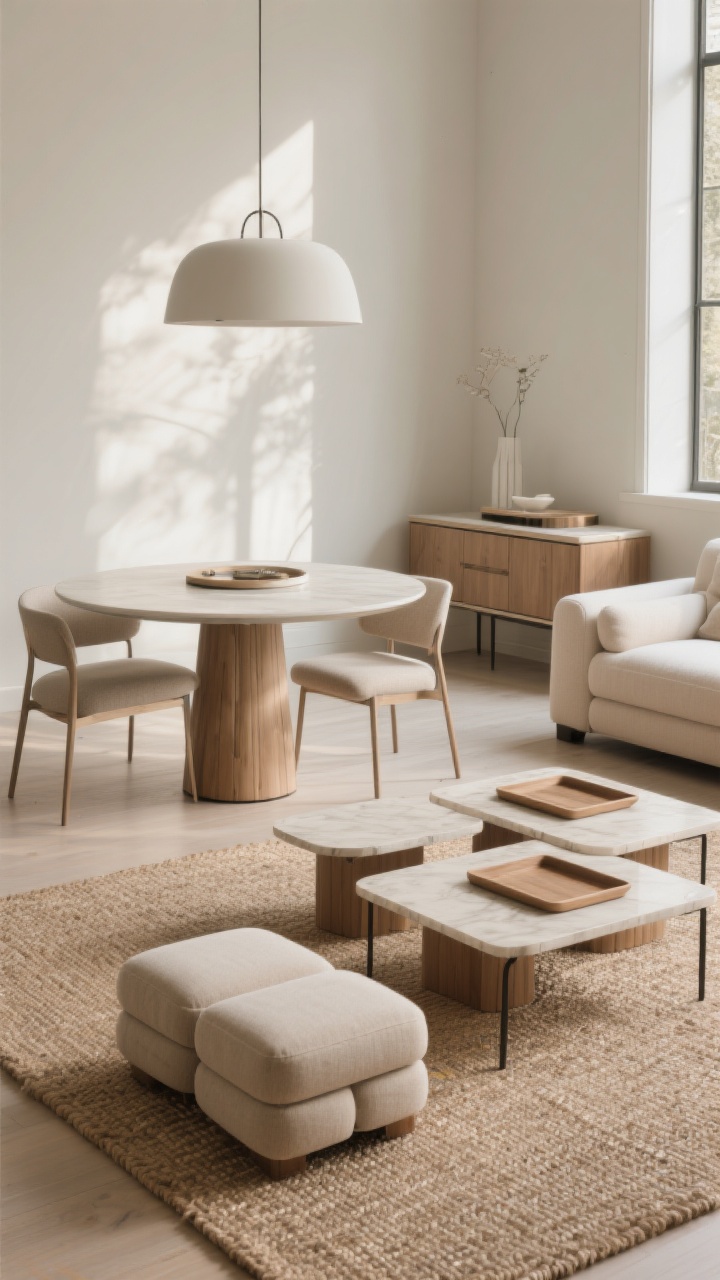
Your furniture should be doing overtime. If it only does one thing, it’s not earning its keep, IMO.
Pieces That Work Hard
- Extendable tables: Keep it compact for daily life; extend when guests come over. Magic.
- Nesting tables: Coffee tables that expand when you need more surface space, then tuck away.
- Benches + ottomans: Use benches as seating by the table, then slide them under when not in use. Ottomans with trays = coffee table + extra seating in one.
- Slender console: Place behind the sofa to double as a buffet during dinner parties.
Stick to slim silhouettes with open bases—think airy chairs, pedestal tables, and leggy sofas. They let light pass through and trick the eye into seeing more space.
3. Play With Scale, Not Just Size
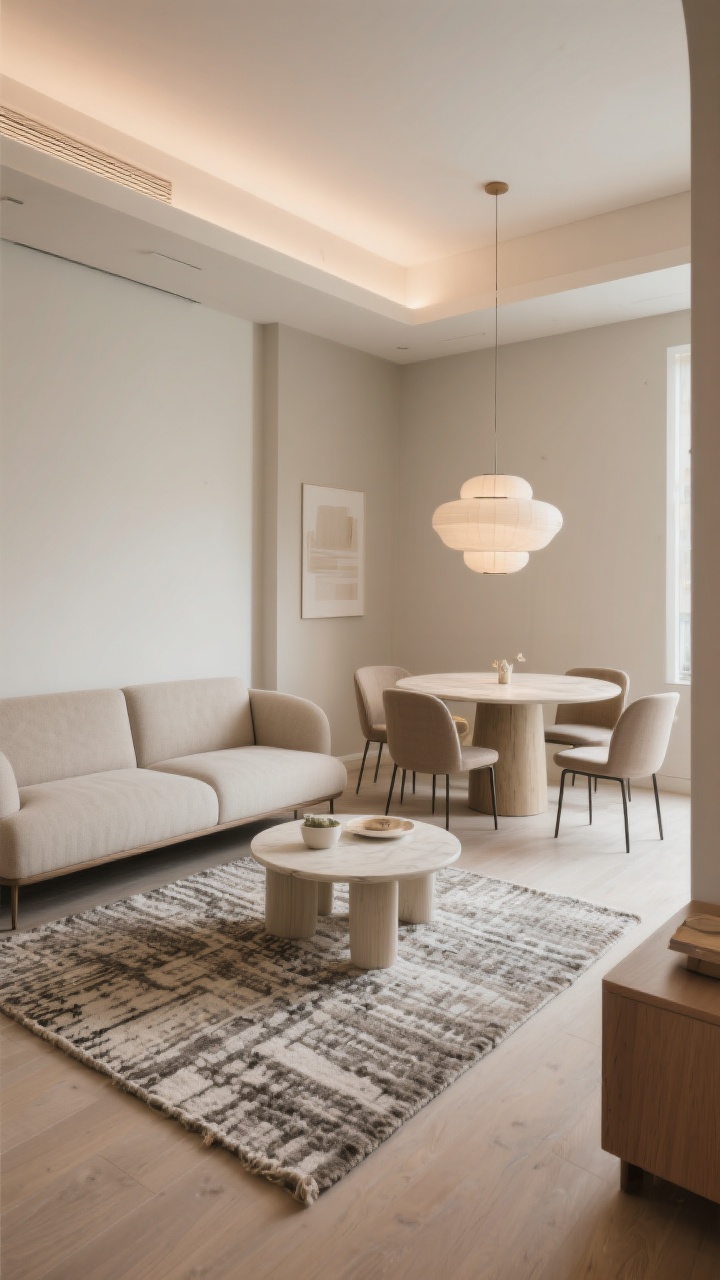
Small space doesn’t mean tiny everything. A bunch of mini pieces can actually make the room feel cluttered. Instead, mix one or two larger anchors with delicate accents.
Smart Scale Rules
- Sofa: Go for a two- or three-seater with a lower back. Low profiles keep sightlines clear.
- Dining table: A round or oval table is your best friend in tight combos—no sharp corners to dodge.
- Chairs: Choose armless dining chairs that tuck all the way in. Bonus if they’re stackable.
Visually, aim for one statement piece per zone—maybe a hero pendant over the table and a textured rug in the living area. Let them shine without shouting over each other.
4. Create Vertical Magic (Hello, Tall Storage)
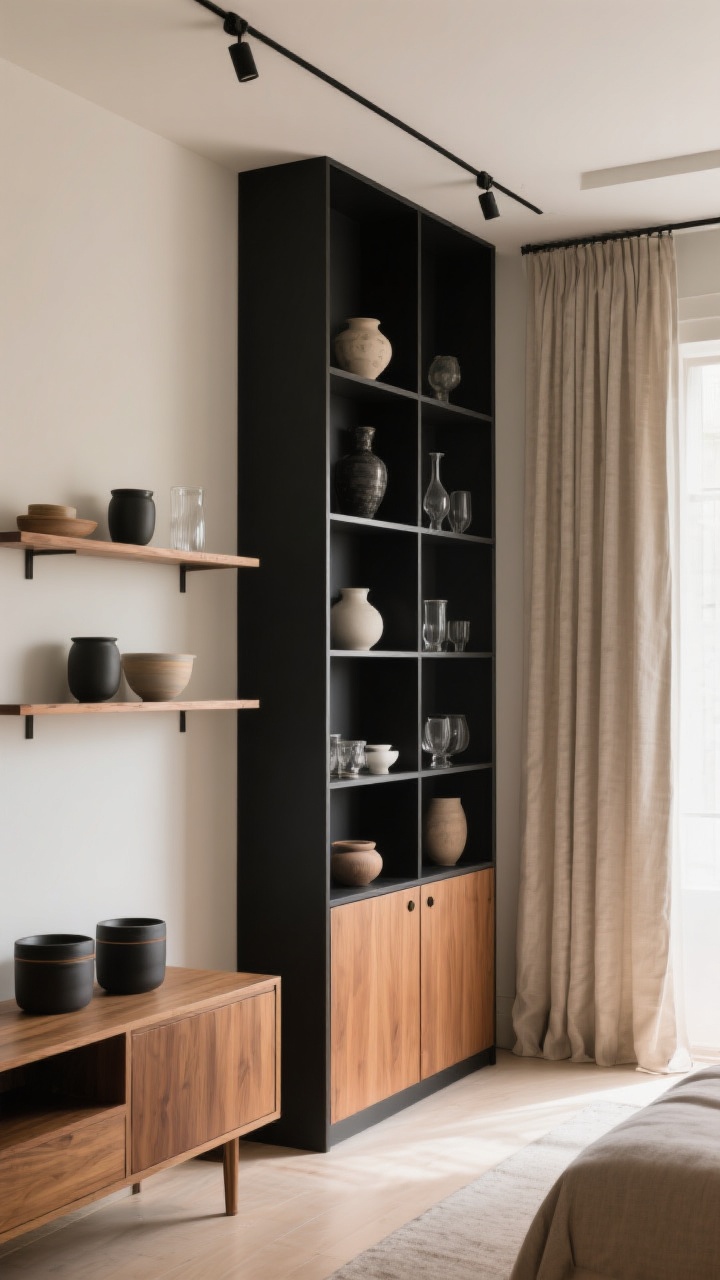
When floor space is tight, think upward. Vertical lines make rooms feel taller, and tall storage swallows clutter like a champ.
Storage That Doesn’t Scream Storage
- Built-in vibes: A tall cabinet or bookcase against one wall can hold dishes, barware, and board games. Keep the lower shelves closed and upper shelves open for display.
- Wall-mounted shelves: Float shelves above a console for glassware and decor. Use matching containers for a clean look.
- High-hanging curtains: Mount rods close to the ceiling to stretch the room visually—FYI, it’s the easiest optical illusion.
Keep storage finishes cohesive. Repeating materials—like black metal and warm wood—ties both zones together and prevents the “furniture showroom” vibe.
5. Light It Like A Designer (Layered, Cozy, Functional)
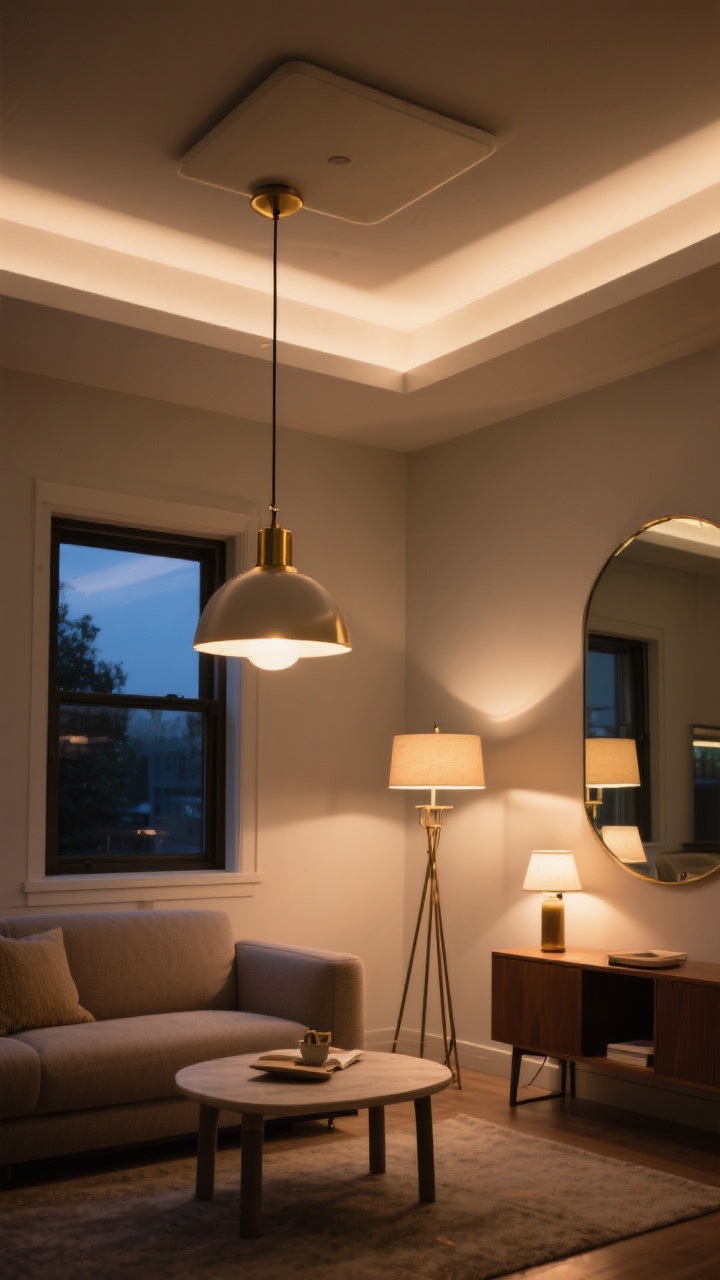
Lighting is everything. Good lighting can make your combo feel bigger, warmer, and—dare we say—expensive.
The Three Layers You Need
- Ambient: Think ceiling lights or flush mounts to brighten the whole space.
- Task: A pendant over the dining table and a reading lamp near the sofa. Aim for dimmable switches so you can set the mood.
- Accent: Picture lights, LED strips on shelves, or a small table lamp on the console for that cozy glow.
Mirror hack: place a large mirror opposite a window (or near your dining pendant) to bounce light and visually double the space. It’s not cheating—it’s strategy.
6. Keep A Tight Color Story (But Don’t Be Boring)
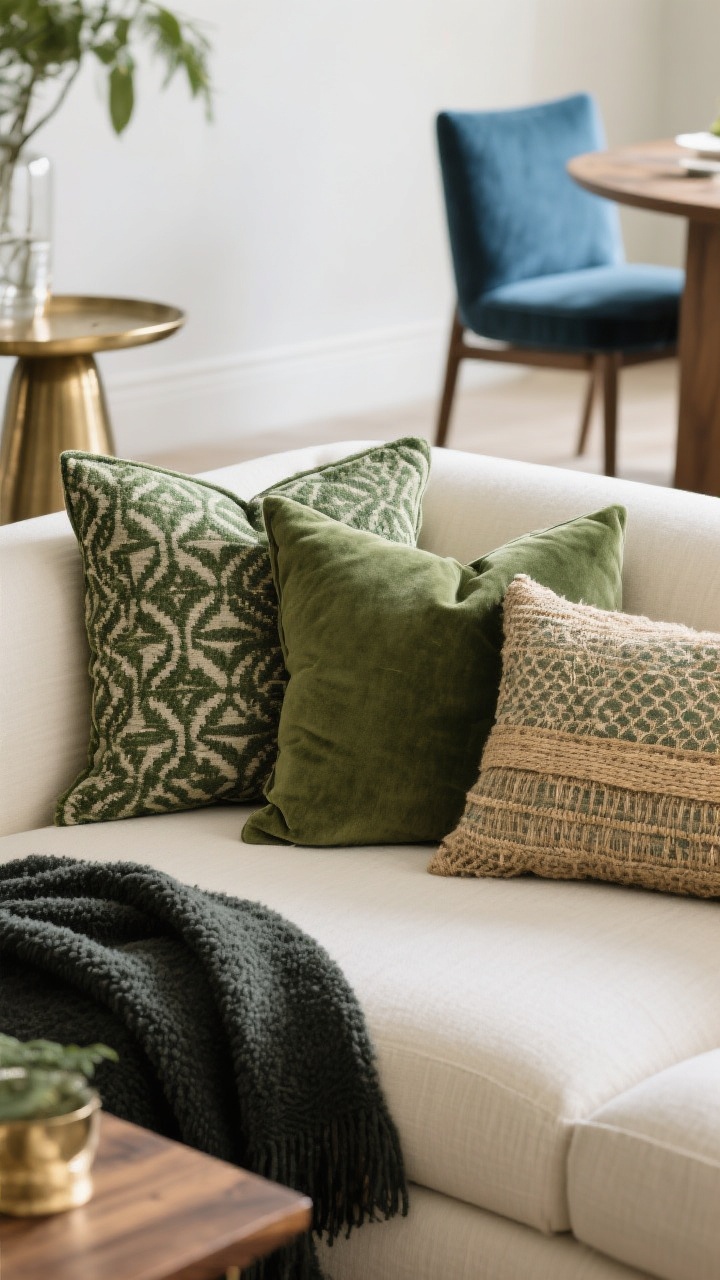
Color is your secret weapon. A connected palette keeps the two zones cohesive while still letting each area show off.
Palette Playbook
- Choose 3-4 colors: One main neutral (cream, soft gray, or greige), one accent, one dark grounding tone, plus a metallic or wood finish.
- Repeat intentionally: If you use blue in couch pillows, echo it in dining chair cushions or artwork.
- Go tonal: Vary shades of the same color for depth without chaos—like sage, olive, and forest.
Pattern fans, you’re welcome: mix one bold pattern (rug or curtains) with two smaller-scale patterns (pillows, napkins). Keep the background tones consistent so it all vibes together. And if you love white walls? Add texture—bouclé, linen, raw wood, jute—to keep it from feeling flat.
7. Style For Flow (Little Details, Big Difference)
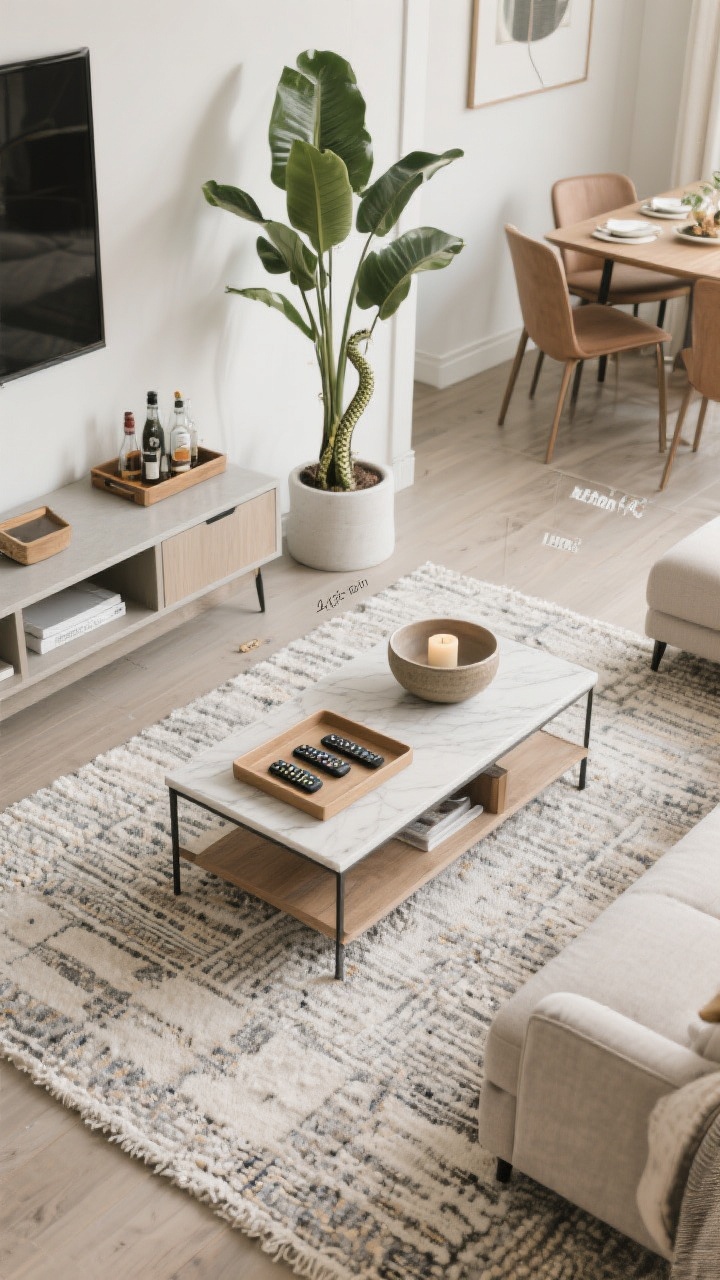
This is where it all comes together. The styling is what makes a small living room and dining room combo look curated instead of crammed.
Layout Tweaks That Work
- Orient the sofa: Face it toward your focal point (TV, fireplace, window) with the dining zone behind or to the side. It creates a natural barrier without blocking views.
- Leave breathing room: Keep at least 18 inches between the sofa and coffee table. And make sure dining chairs can pull out 24 inches, minimum.
- Use trays: Corral remotes on the coffee table and bar gear on the console. Trays = instant order.
Decor That Multitasks
- Art strategy: Hang a cohesive gallery wall across both zones to bridge them visually.
- Greenery: A tall plant can mark the border between living and dining without feeling like a wall. Snake plants and olives are low-fuss winners.
- Tabletop rules: Keep dining centerpieces low and simple so you’re not moving a sculpture every mealtime. A bowl, a candle, done.
Finally, edit. Then edit again. If something’s not pulling its weight—comfort, storage, or style—let it go. Your space will breathe, and you’ll love it more. Promise.
You’ve got this. With smart zoning, flexible furniture, and a tight color story, your small living room and dining room combo can be chic, functional, and seriously welcoming. And when friends ask how you made it look so good? Just smile and say, “Layers.”
